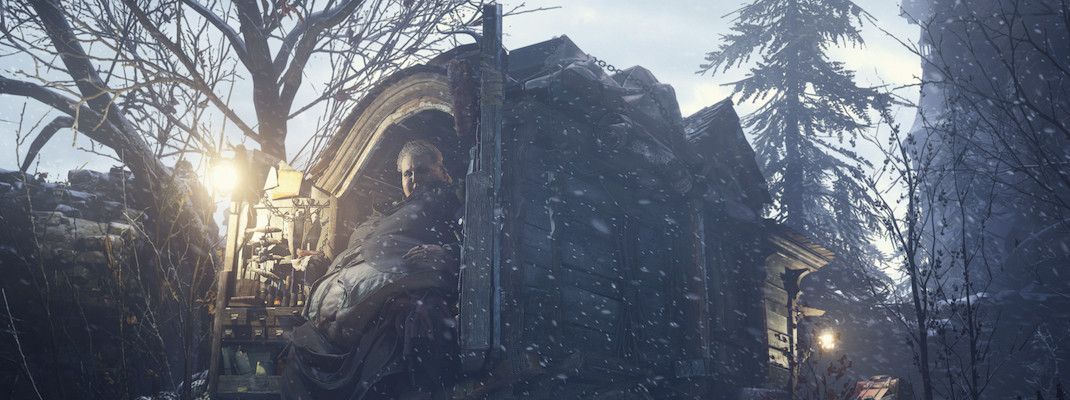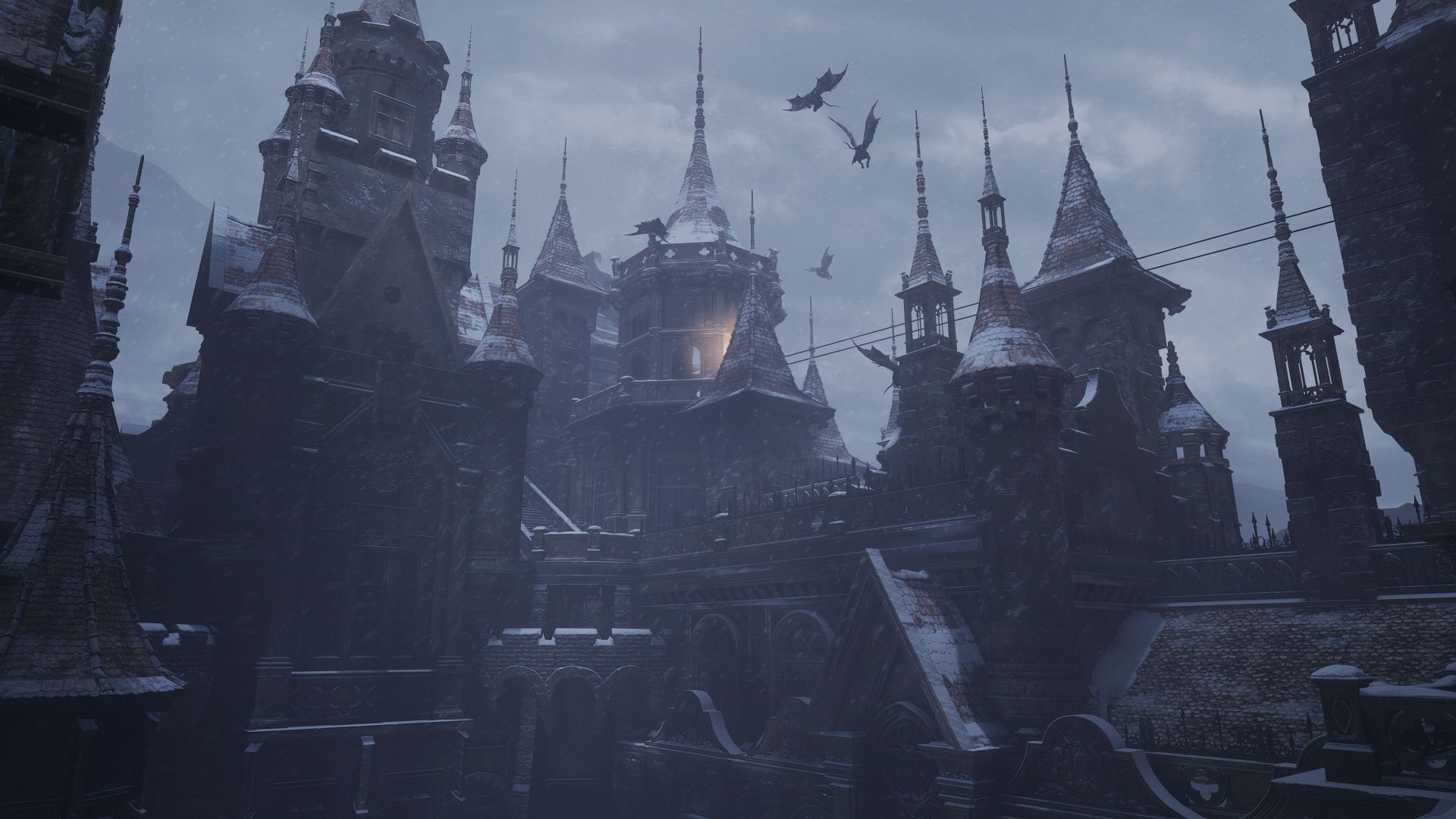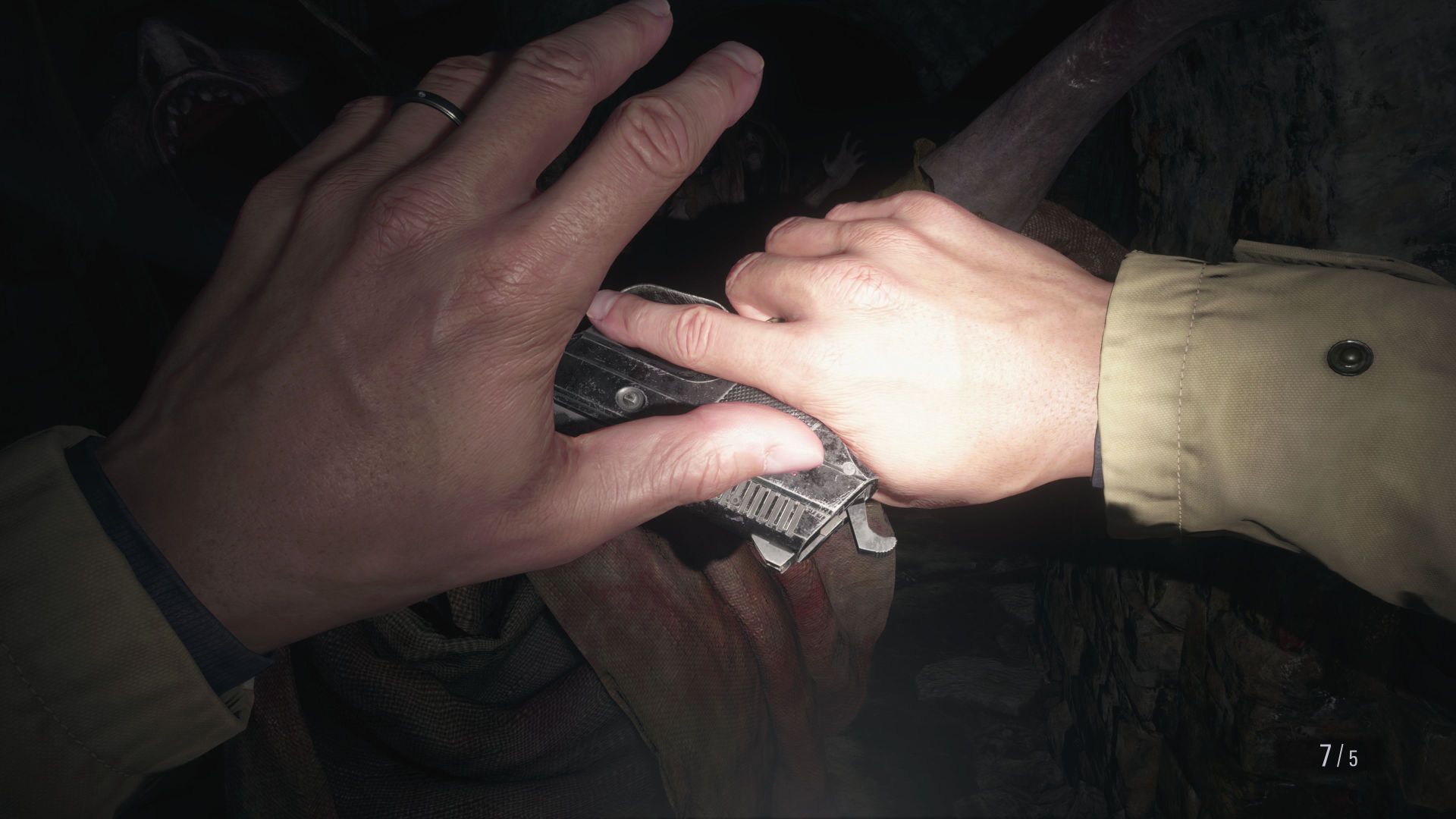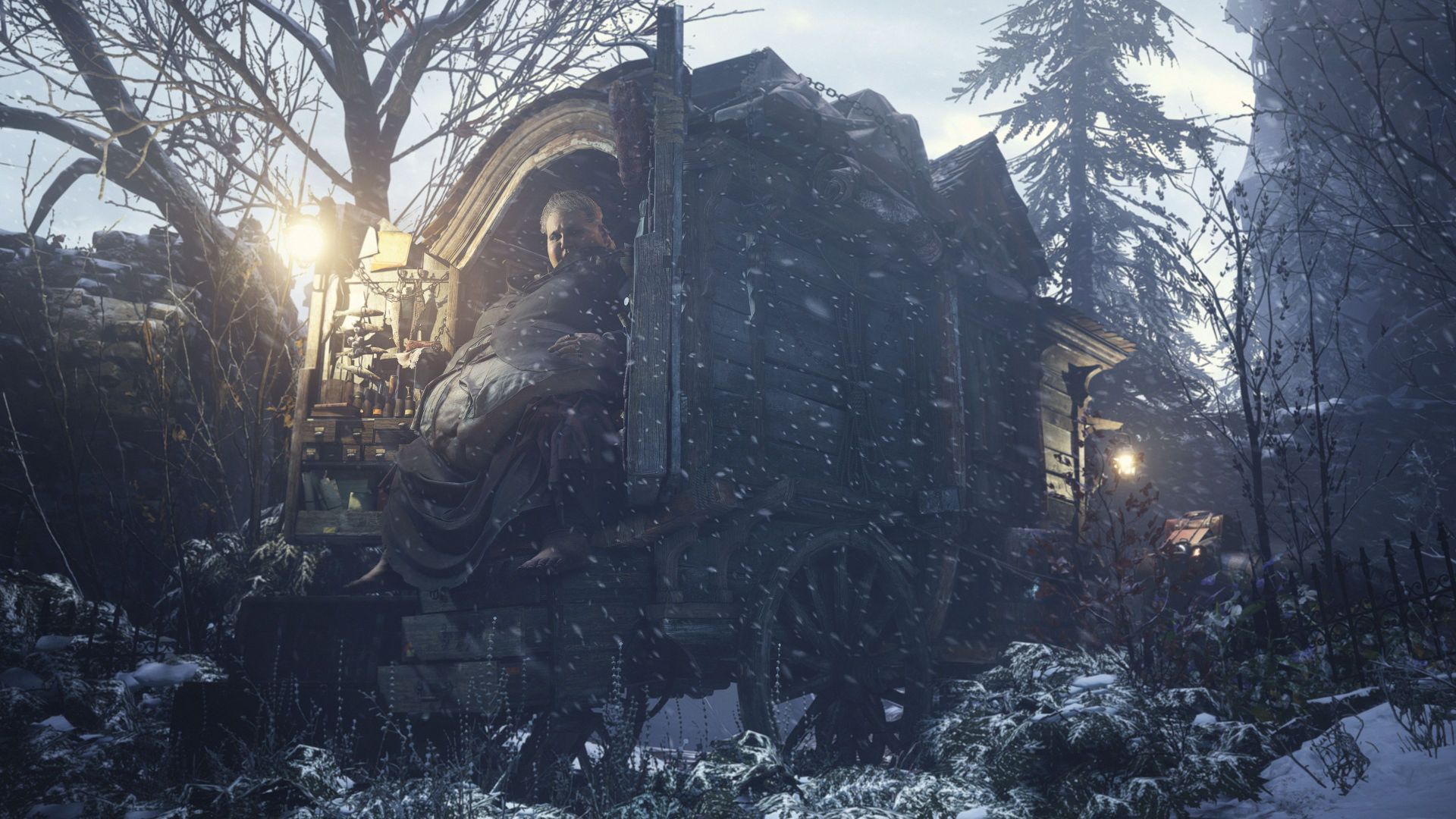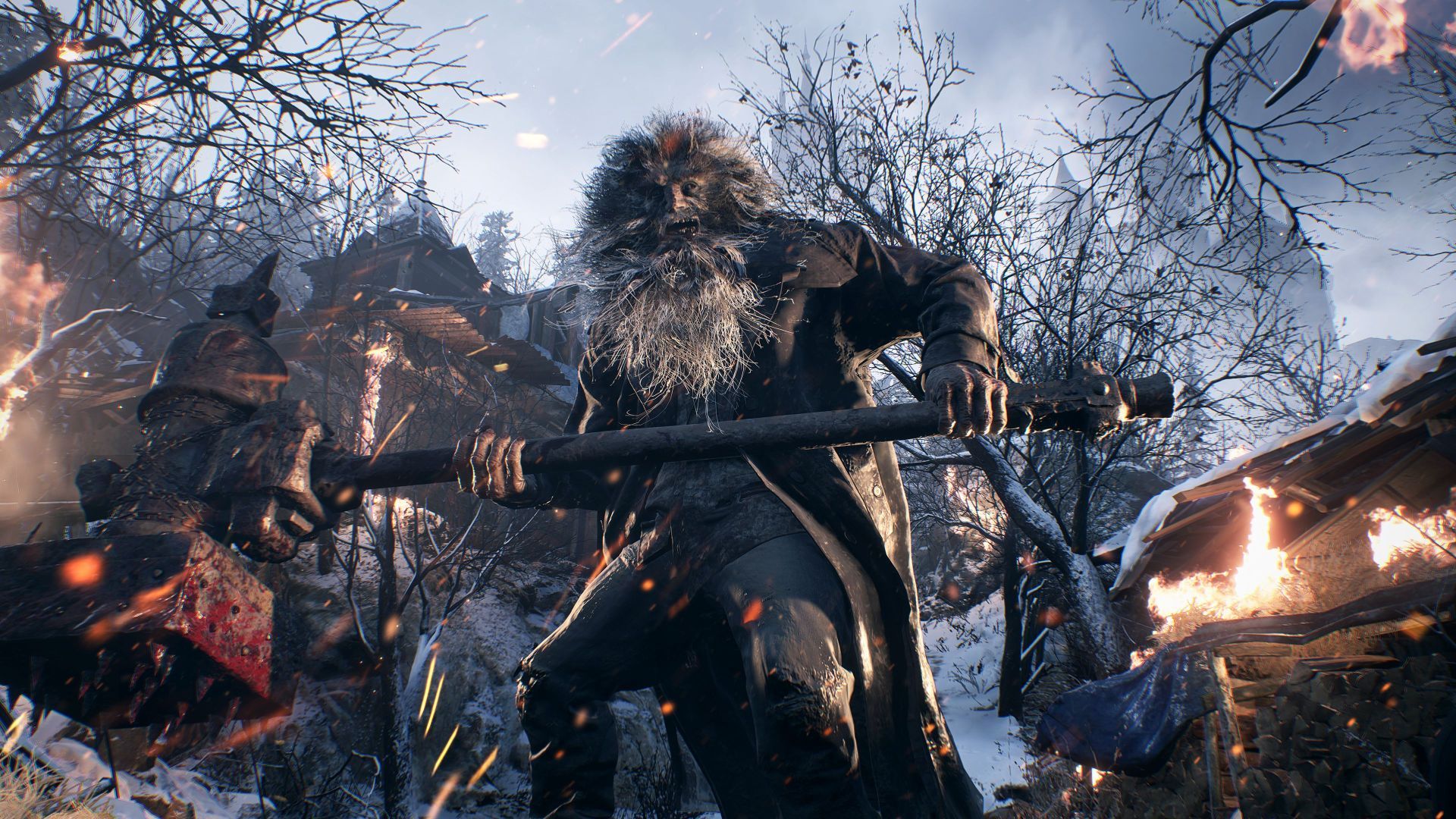Four years ago, Capcom rebooted and resurrected the Resident Evil franchise with Resident Evil 7: Biohazard and took the game in a completely different direction. The game introduced a first-person perspective and went with an overall horror-based design that fully immersed the player. Capcom would go on to release two remakes of two popular Resident Evil titles with Resident Evil 2 and Resident Evil 3 as it strayed away from the design of RE7. That design is now back with Resident Evil Village but rather than taking inspiration from the very first game in the series, Village takes inspiration from the wildly-popular Resident Evil 4. What's under the blanket, however, is the amount of love for the horror genre as a whole that Resident Evil Village shows off throughout the game.
Village literally starts off with a video recap of the events of Resident Evil 7 and all that happened at the Baker House. This game still features the protagonist from the previous game with Ethan Winters. Ethan and his wife Mia now have a daughter and have relocated to Europe. After putting their daugher, Rose, down to sleep, the house gets broken into by a task force that is lead by Chris Redfield. Rose is then kidnapped and during their travel, the escort gets taken out and Rose goes missing once Ethan awakes in the village. The village is desolate with its inhabitants hiding from literal werewolves, or lycans as they are called in the game. From here, Ethan sets out to find his daugher amidst the chaos that is occurring in the small European town that features a giant castle as the backdrop.
A lot of these elements are similar to Resident Evil 4, but the game plays nothing like that title. You won't see any roundhouse kicks or quick-time events nor will you experience awfully-cheesy dialogue. The game is split up into four main parts, but tends to blend in more elements of RE4 as the experience goes on. Guns are mostly useless early on the game as enemies take a lot of bullets and you'll find yourself running and worrying about the consequences later just to get away from what you experienced. The first half of the game is rather clever as you'll need to think about your encounters rather than just blowing opponents away. It's an absolutely wonderful segment with the outdoor elements creating a more tense experience and the castle residing more with what was seen in RE7. There's tons of tropes that will make horror fans think about certain movies and it feels like a love letter to them.
With these recent Resident Evil titles, Capcom seems to have an issue with going back to its old ways. While some sections in the middle start to transition over to psychological horror with more puzzle solving, the back half starts getting more towards action. There's one section that ends up being so action-focused that it almost ruined the entire experience for me. Luckily, the end of the game is fantastic and made up for it as a lot of details are shored up and the overall Resident Evil lore gets added to. Village is much longer than its predecessors as you're looking at almost fifteen hours on your first playthrough depending at the rate of speed you play at.
The puzzles are spread out across the board and some involve some deeper thinking than others, but like a Resident Evil title, players can expect backtracking and exploration especially within the village itself. This is the most open-world Resident Evil title there is, but it could be housed under one roof. Ethan even complains that there's more to do towards the end of the game as it becomes a daunting task. You feel as if you come to a good end point to the game after a few encounters only to find out there's more to do and I'm not sure if the production team was making fun of itself with these complaints.
Besides the lycans, there isn't a ton of enemy variety in Village but there' more than what was seen in 7. Capcom does an excellent job of blending various types of enemies together to throw you off. You have the ability to try and shoot slower enemies while being chased as you need to save time or try to knife them or avoid them altogether. Ethan feels much weaker in the first half of the game as he's slow and enemies seem to be super powerful. Ammo is also scarce in the first half and if you try to buy ammo, it's prohibitively expensive. The merchant, Duke, charges 1000 Lie for one shotgun bullet, so the expensive ammo is equivalent to current real-life pricing. Thankfully, you can craft ammo and unlock or purchase blueprints to make various ammo types or explosives that will be key along the way. While ducking enemies is totally feasible, they will drop money or supplies like they did in RE4 and you may be missing out on key items down the road. The boss fights begin cleverly in the game, but become increasingly underwhelming. I feel the game would be more challenging if there were no weapon upgrades, and being introduced to a new enemy that seems scary ends up falling flat. All the boss designs are fantastic, however, and each one offers a variety of classical horror lore, but on the standard difficulty, they weren't all that much trouble to bring down. It may be due to the long-time design for these games, but early on, these encounters were great.
The Duke brings back the merchant element to Village that was seen in RE4. While you may find weapon upgrades in secret chests along the way, The Duke allows for upgrading your weapons along with purchasing new ones along the way. Treasures also make their return as they can be sold for a lot of money. What Capcom has added is a "hunting" element to the game, but not to the level of Red Dead Redemption 2. Taking down chicken, fish, goats or pigs will give you meat that you can take to The Duke to cook you a dish. These dishes give you personal upgrades that help get Ethan out of the powerless feeling that exists in the first part of the game. There are other quality of life changes as well. While green herbs exist in the game, you can't use them as standalone items. These must be crafted into the medical juice that existed in RE7. What's also gone are the defensive maneuvers or weapons. Certain bookshelves can be used to block doors and allow time to escape an area. The game also uses the RE4 inventory design, but doesn't offer the hassle of the original. Lastly, breaking open item boxes is automatic and no longer requires shooting or taking your knife out to open them.
To help set the atmosphere in Village, Capcom doubled down on the RE7 experience while adding other elements. The heavy breathing of Ethan is still persistent along with subtle vibrations from the DualSense controller on the PlayStation 5. The wind plays a large role here as it adds to the isolation feeling especially when you're in open space. The music, when it plays, is subtle with 2-3 actual musical scores. When enemies approach or are nearby, the music picks up and adds to a tense atmosphere. More times than not, you'll hear an enemy before you ever see them and the 3D positional audio from the PlayStation 5 plays a pivotal role in helping you along your way. Jump scares are strong and well crafted in Village and you can't help but be impressed after one happens. They aren't overly abundant, which makes the event even more surprising since they're timed well.
The DualSense adds more than just the dynamic vibrations to Village. The game does offer the option to aim with the controller itself and hopefully this opens the door to a virtual reality version down the road. Aiming and shooting with the triggers feels like pulling a trigger on the actual gun, but doesn't go as deep as other shooters out there. When knifing an opponent, depending on your stamina, more resistance is added for each hit. The light color on the controller also changes with your health status. These little aspects should add more to the experience over the other platforms.
Capcom and its RE Engine allow it to make some of the best-looking games out there, and Resident Evil Village makes the most of it. The game is a visual masterpiece as its character models and design are detailed and beautiful along with its environment and draw distance. The game uses Ray Tracing for the first time and these reflections make the Village unbelievably lifelike. The lighting adds to the ambiance in certain situations and the tension in others. Darks areas are extremely dark and you may need to rely on the faintest of light to explore certain areas. The detail in the castle is ridiculous. Capcom does a great job hiding some of its low-resolution assets as the game shines at a distance, but can get ugly if you get up close to individual assets. The game runs at 4K and mostly 60 FPS with Ray Tracing turned on. There's occasional pop-in from these assets. There are also no loading times; going from door-to-door or going to a different area requires no loading. There's also a photo mode and I've never used one of these as much as I did here. The backdrops and scenery are jaw-dropping and this may be the most goth game out there.
Capcom is including RE:Verse, the multiplayer pvp mode for free, but it also brought back a fan-favorite with the Mercenaries Mode. This is an arcade mode that takes you to different areas to achieve the highest points by completing combos and killing enemies. This dates back, arguably, to the Sega Saturn version of the original game but was introduced in the original RE3. RE4 perfected this mode as Capcom included it with RE5-6 as well. This is the first time Mercenaries exists in the first person on a slower-paced game and it doesn't work that well. It plays more like the Raid Mode that's seen in the Revelations series. There's a timer to kill a set number of enemies and you can increase your time, but there's only like 30. You cannot melee enemies, but you are able to unlock and select different boosts in each game. Rather than choosing a character from the game, you can purchase guns to use in combat. Each level has different areas that you progress through that results in a final score as long as you complete each one and survive. The three games the mode was popular in were more action-focused and offered faster gameplay and it doesn't translate well in Village. It still remains a reward when beating the game, though.
Closing Comments:
When Capcom released Resident Evil 7, not only did it reinvent the Resident Evil series, but reinvented mainstream horror games as we know them. Boasting an incredible first half, Resident Evil Village is a fantastic and worthy follow-up, even though it regrettably drags on near the end. The final boss battle helps make up for it, however, as it's one of the best in the series while many questions are answered throughout. Where RE7 offered elements from the first three games, Village implements aspects and inspiration from the latter three games in the series prior to 7, with more of a focus on RE4. Village is absolutely beautiful thanks to the tricks of the RE Engine. Horror fans will love literally every aspect of it, but the series seems to be trending further away from a Resident Evil game outside of a name drop or character inclusion. It's great to see Capcom continuing to evolve Resident Evil more towards a true horror experience, but it needs to stay away from trying to do too much. Despite a few concerns, Resident Evil Village is one of the best horror game experiences out there.
Resident Evil Village
Reviewed on PlayStation 5
- Franchise
- Resident Evil
- Platform(s)
- PS4 , PS5 , Xbox One , Xbox Series X , Xbox Series S , Stadia , PC
- Released
- May 7, 2021
- Developer(s)
- Capcom
- Publisher(s)
- Capcom
- Genre(s)
- Survival (dupe) , Horror
- Engine
- RE Engine
- ESRB
- M for Mature: Blood and Gore, Intense Violence, Strong Language
- How Long To Beat
- 10 Hours

